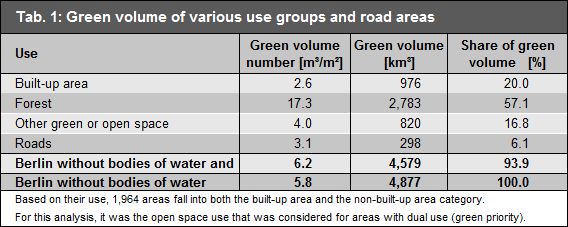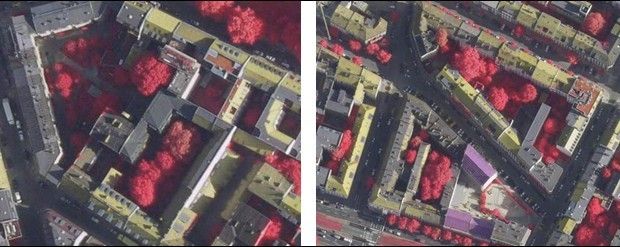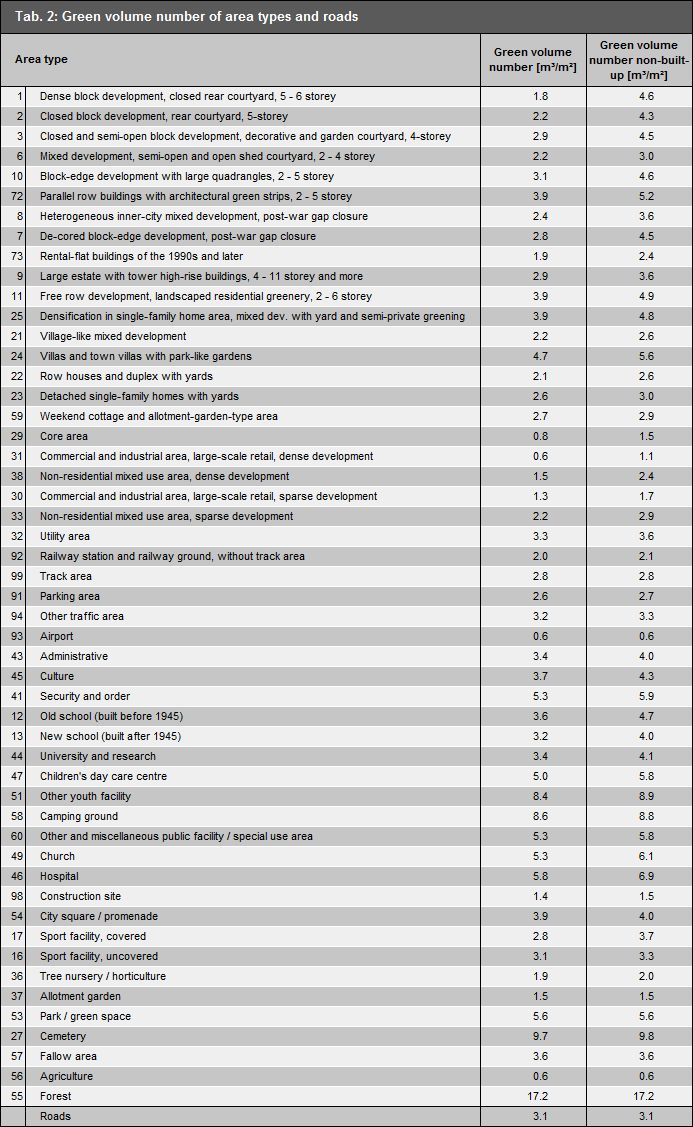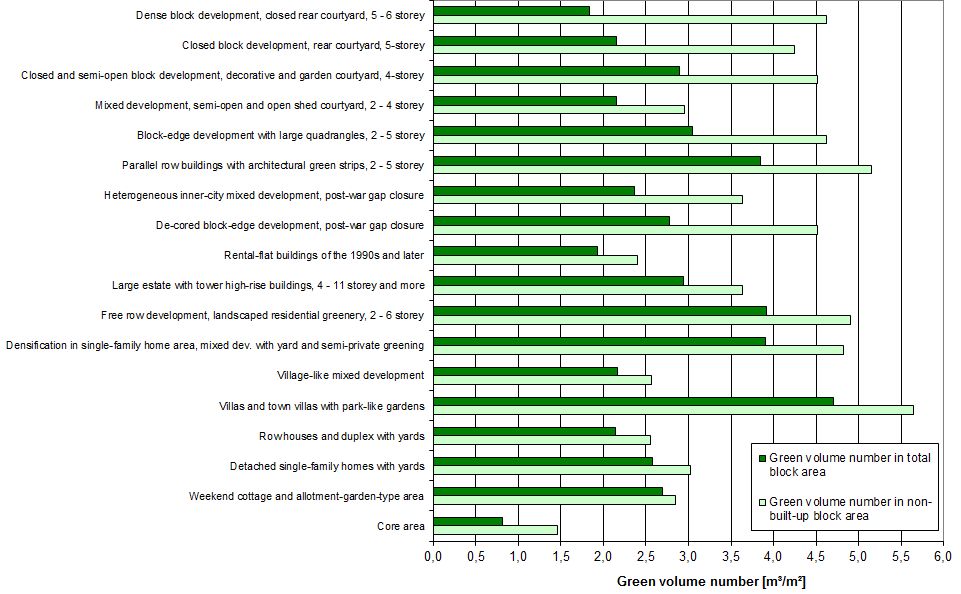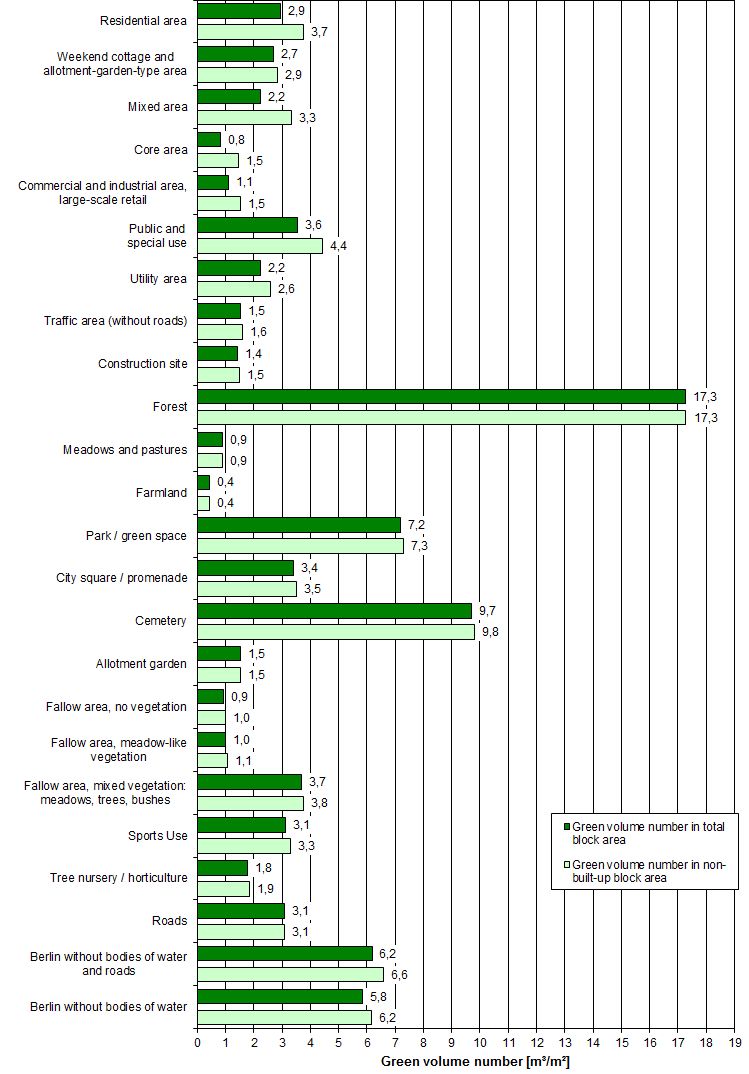The map illustrates the green volume for blocks, block segments and road areas. As expected, the highest green volume numbers were recorded for Berlin’s forest areas. Varying green volume numbers were also recorded within residential areas, however, which are described in more detail below.
In total, Berlin has a green volume of 4.877 km³, excluding bodies of water. This corresponds to an average green volume number of 5.8 m³/m². As expected, more than half of the green volume stems from forest areas (2.783 km³, 17.3 m³/m²). The built-up blocks and block segments house the least vegetation per area (2.6 m³/m²) as do the roads (3.1 m³/m²) (Table 1, cf. Environmental Atlas Maps 06.01 and 06.02).
Regarding the green volume of road areas, it should be noted that it is mainly roadside trees and vegetation, e.g. tree crowns, protruding from blocks and block segments that influence green volume calculations. Due to the cylinder graph used (cf. Figure 1), the green volume is often overestimated here, compared to other areas.

